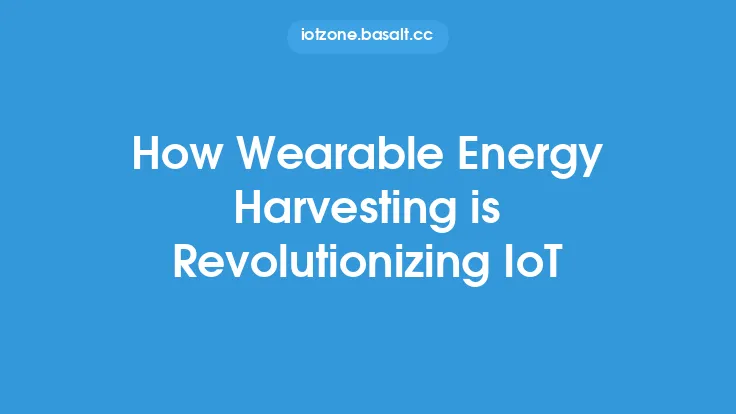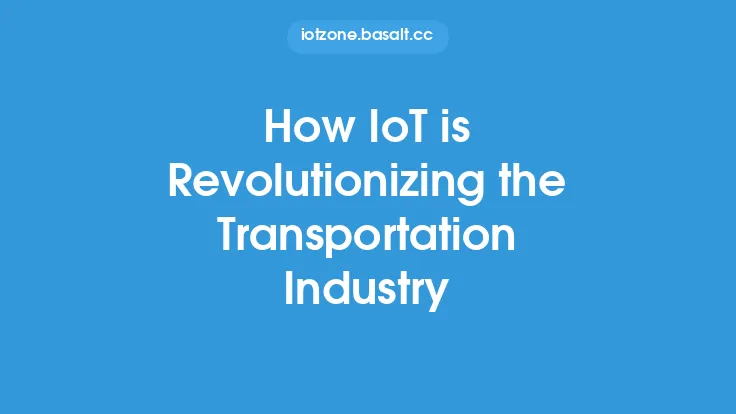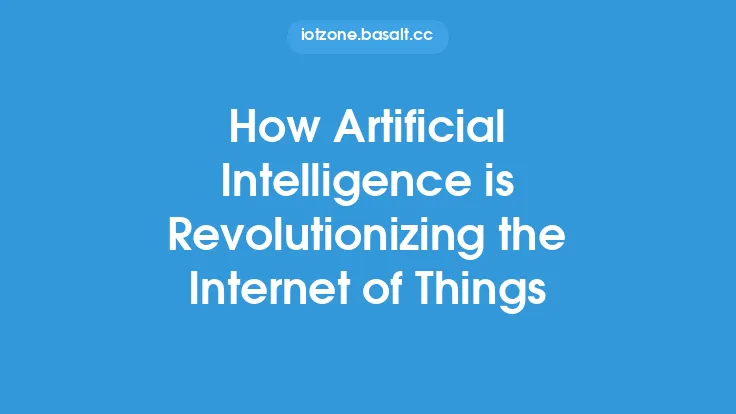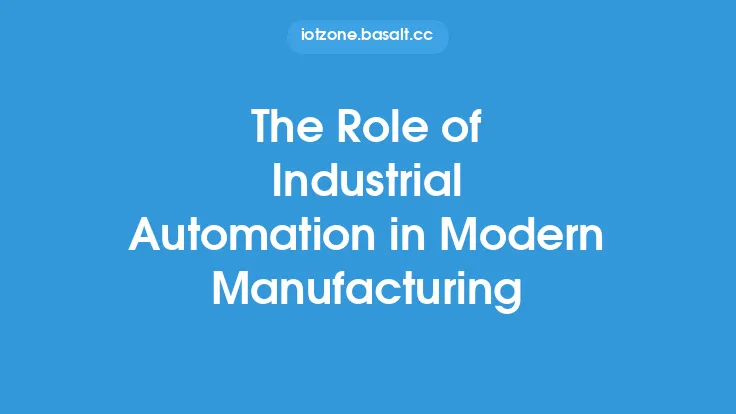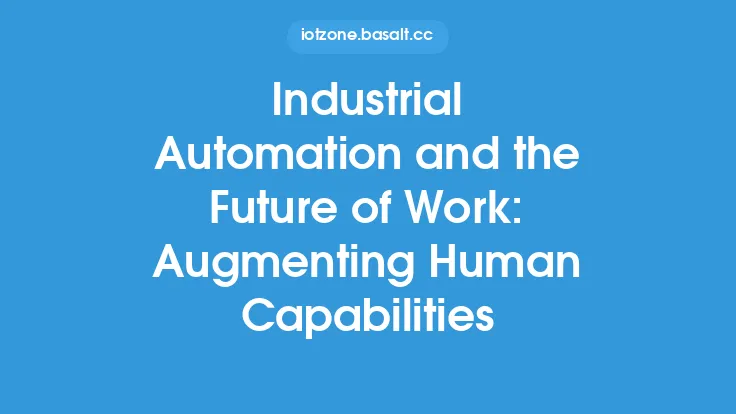The advent of the Industrial Internet of Things (IIoT) has marked a significant turning point in the manufacturing sector. By integrating sensors, actuators, and other devices with advanced analytics and machine learning capabilities, manufacturers can now optimize their production processes, improve product quality, and reduce costs. At its core, IIoT is about connecting the physical and digital worlds to create a more efficient, flexible, and responsive manufacturing system.
Introduction to Industrial IoT
Industrial IoT refers to the use of IoT technologies in industrial settings, such as manufacturing, oil and gas, and transportation. It involves the deployment of sensors, devices, and other technologies to collect and analyze data from industrial equipment and processes. This data can be used to optimize production, predict maintenance needs, and improve product quality. IIoT is built on top of several key technologies, including machine-to-machine (M2M) communication, big data analytics, and cloud computing.
Key Components of Industrial IoT
Several key components are necessary for a successful IIoT implementation. These include:
- Sensors and Devices: These are used to collect data from industrial equipment and processes. Examples include temperature sensors, pressure sensors, and vibration sensors.
- Communication Protocols: These are used to enable communication between devices and the cloud or other systems. Examples include MQTT, CoAP, and HTTP.
- Data Analytics: This involves the use of advanced analytics and machine learning algorithms to analyze data from sensors and devices. Examples include predictive maintenance, quality control, and energy management.
- Cloud Computing: This provides a scalable and secure platform for storing and processing large amounts of data. Examples include Amazon Web Services (AWS), Microsoft Azure, and Google Cloud Platform (GCP).
Benefits of Industrial IoT
The benefits of IIoT are numerous and well-documented. Some of the most significant advantages include:
- Improved Efficiency: IIoT can help manufacturers optimize their production processes, reduce waste, and improve product quality.
- Predictive Maintenance: IIoT can be used to predict when equipment is likely to fail, allowing for proactive maintenance and reducing downtime.
- Increased Flexibility: IIoT enables manufacturers to respond quickly to changes in demand or production schedules.
- Cost Savings: IIoT can help manufacturers reduce energy consumption, lower maintenance costs, and improve supply chain management.
Industrial IoT Applications
IIoT has a wide range of applications in the manufacturing sector. Some examples include:
- Predictive Maintenance: IIoT can be used to predict when equipment is likely to fail, allowing for proactive maintenance and reducing downtime.
- Quality Control: IIoT can be used to monitor product quality in real-time, allowing for quick detection and correction of defects.
- Energy Management: IIoT can be used to optimize energy consumption, reduce waste, and improve sustainability.
- Supply Chain Management: IIoT can be used to track inventory, monitor shipments, and optimize logistics.
Challenges and Limitations
While IIoT offers many benefits, there are also several challenges and limitations to consider. These include:
- Security: IIoT devices and systems can be vulnerable to cyber attacks, which can compromise data integrity and disrupt production.
- Interoperability: IIoT devices and systems from different manufacturers may not be compatible, which can make integration and communication challenging.
- Data Management: IIoT generates large amounts of data, which can be difficult to manage and analyze.
- Skills and Training: IIoT requires specialized skills and training, which can be a challenge for manufacturers with limited resources.
Future of Industrial IoT
The future of IIoT is exciting and rapidly evolving. Some of the trends and developments to watch include:
- Artificial Intelligence (AI): AI and machine learning will play an increasingly important role in IIoT, enabling more advanced analytics and decision-making.
- 5G Networks: The rollout of 5G networks will provide faster, more reliable communication for IIoT devices and systems.
- Edge Computing: Edge computing will become more prevalent, enabling faster processing and analysis of data at the edge of the network.
- Digital Twinning: Digital twinning will become more widespread, enabling manufacturers to create virtual replicas of their production processes and equipment.
Conclusion
In conclusion, Industrial IoT is revolutionizing the manufacturing process by providing a more efficient, flexible, and responsive production system. By integrating sensors, devices, and advanced analytics, manufacturers can optimize production, improve product quality, and reduce costs. While there are challenges and limitations to consider, the benefits of IIoT are clear, and the future of this technology is exciting and rapidly evolving. As manufacturers continue to adopt and implement IIoT solutions, we can expect to see significant improvements in productivity, efficiency, and sustainability.
